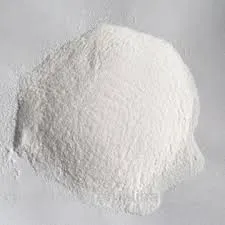
Nov . 19, 2024 04:13 Back to list
Methyl Hydroxyethyl Cellulose and Its Applications in Modern Industries
Methyl Hydroxyethyl Cellulose An Overview
Methyl hydroxyethyl cellulose (MHEC) is a non-ionic, water-soluble polymer derived from cellulose, a natural polymer that represents one of the most abundant organic compounds on Earth. This particular cellulose derivative, MHEC, is widely used in various industrial applications due to its unique properties, such as thickening, gelling, and water-retention capabilities. In this article, we will explore the composition, properties, applications, and benefits of MHEC, highlighting its significance in multiple sectors.
Composition and Structure
Methyl hydroxyethyl cellulose is synthesized through the etherification process of cellulose, which involves the substitution of hydroxyl groups present on the cellulose backbone with methyl and hydroxyethyl groups. The degree of substitution (DS) can vary, allowing manufacturers to tailor MHEC for specific applications. This modification not only enhances the solubility of cellulose in water but also imparts unique rheological properties that are essential for various formulations.
The structure of MHEC can be described as a linear polymer chain with hydroxyl groups that can form hydrogen bonds with water molecules. This hydrophilic nature facilitates the formation of viscous solutions that are crucial in many applications. The viscoelastic behavior of MHEC solutions allows them to act as effective thickeners, stabilizers, and film-formers.
Properties
MHEC exhibits a variety of notable properties, making it a versatile compound. Some of the key characteristics include
1. Solubility MHEC is soluble in both hot and cold water, providing flexibility in formulation processes.
3. Water Retention MHEC has excellent water retention properties, which helps in maintaining moisture in various applications, such as construction and personal care.
4. Thermal Stability MHEC solutions maintain their viscosity over a wide range of temperatures, making them suitable for both high-temperature processes and cooler applications.
methyl hydroxyethyl cellulose

5. Non-Toxicity Being derived from cellulose, MHEC is generally regarded as safe (GRAS) for use in food, pharmaceuticals, and cosmetics.
Applications
Methyl hydroxyethyl cellulose is employed across various industries due to its multifunctional properties. Some of the most common applications include
1. Construction MHEC is widely used in tile adhesives, grouts, and dry-mix mortars. Its water-retention ability ensures better adhesion and workability, making it a favored additive in modern construction materials.
2. Personal Care In skincare and cosmetic products, MHEC serves as a thickener, emulsifier, and stabilizer. It enhances the texture and consistency of creams, lotions, and gels, providing a pleasant user experience.
3. Food Industry As a food additive, MHEC can act as a thickening agent and stabilizer in sauces, dressings, and dairy products, contributing to improved mouthfeel and product stability.
4. Pharmaceuticals In the pharmaceutical sector, MHEC is used as a binder and disintegrant in tablet formulations. Its soluble nature aids in the controlled release of active ingredients.
5. Coatings and Paints MHEC is utilized in paint formulations for its thickening properties, improving the flow and application of the paint while reducing sagging.
Benefits
The benefits of using methyl hydroxyethyl cellulose are manifold. Its versatility makes it applicable in multiple sectors, allowing manufacturers to create products that meet specific performance criteria. The ability to tailor the degree of substitution allows for customized properties, improving product efficacy in various formulations. Additionally, MHEC’s non-toxic nature aligns with the growing consumer demand for safer, eco-friendly products.
In summary, methyl hydroxyethyl cellulose is a valuable ingredient in many industries, offering a combination of desirable properties that enhance product performance. As innovation continues and the demand for sustainable solutions grows, the role of MHEC in modern applications is likely to expand, cementing its place as a key contributor to advancements across multiple sectors.
-
Versatile Hpmc Uses in Different Industries
NewsJun.19,2025
-
Redispersible Powder's Role in Enhancing Durability of Construction Products
NewsJun.19,2025
-
Hydroxyethyl Cellulose Applications Driving Green Industrial Processes
NewsJun.19,2025
-
Exploring Different Redispersible Polymer Powder
NewsJun.19,2025
-
Choosing the Right Mortar Bonding Agent
NewsJun.19,2025
-
Applications and Significance of China Hpmc in Modern Industries
NewsJun.19,2025







